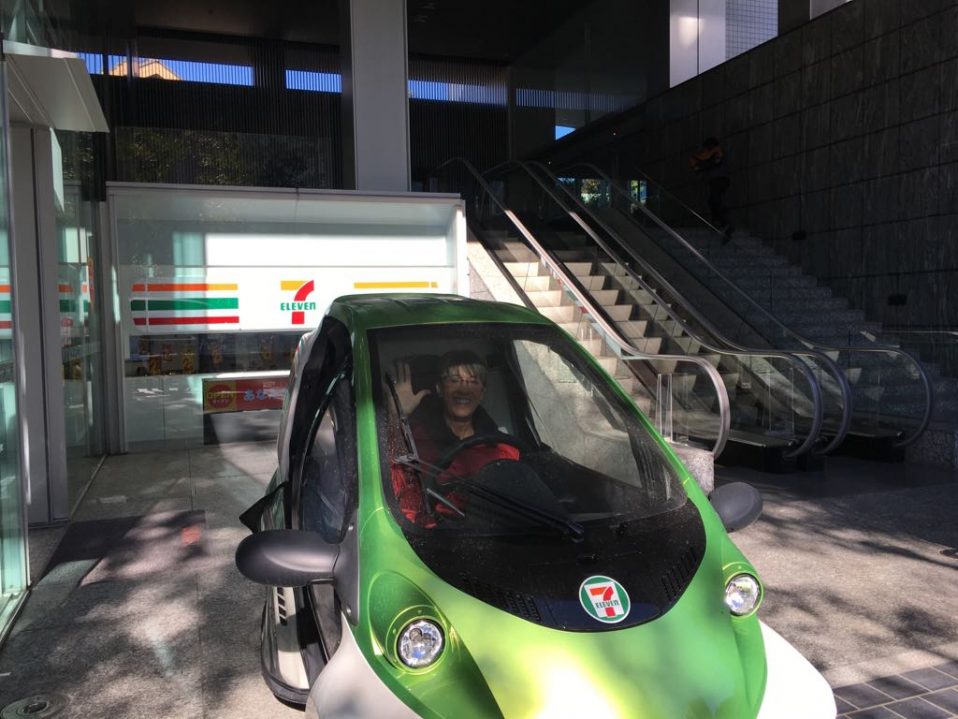By Robyn Stone, Director of Research, Global Ageing Network
A super-sized soft drink may be the first image that comes to mind when Americans think about their local 7-Eleven stores. But for many older adults living in Japanese cities, the convenience store chain represents a valued source of healthy food and friendly visiting that support aging in community.
Don’t believe it? I didn’t either, until I saw it for myself during a recent trip to Japan.
That trip, which included a meeting with the CEO of 7-Eleven Japan, came to mind a few weeks ago when I ran across an article by Christopher Philipson on a British website that explores issues around city planning.
In “How Can We Build Age-Friendly Cities,” Phillipson outlines with depressing clarity the myriad barriers to building “age-friendly” cities.
Since 2010, more than 500 cities around the globe have promised to spearhead initiatives that make it easier for people to continue living in, navigating around, and receiving support from their cities as they age. The World Health Organization (WHO) deserves a lot of credit for sparking the Age-Friendly City movement and giving it momentum. But that 8-year-old movement needs a serious shot in the arm, according to Phillipson.
Many cities in the WHO network started out with good intentions, he writes. But a host of serious challenges are now prompting some of those cities to redirect their energies and resources away from age-friendly work. That’s not good news for cities that are already home to record-breaking numbers of older citizens.
Phillipson has a few ideas that could help reinvigorate the age-friendly movement. One of my favorites involves collaborating with a variety of new partners to get the job done.
Clearly, government agencies and nonprofit organizations are key players in helping city-dwelling elders age in community. But they can’t do it alone. They need active and engaged partners from many other sectors—including the business sector.
That’s where 7-Eleven comes in.
DELIVERING FOOD AND FRIENDSHIP
I went to Japan as part of a research initiative funded by the U.S. Department of Housing and Urban Development, Ginnie Mae, and the government of Japan. The yearlong project brought together researchers and government officials from the U.S. and Japan so we could share strategies for helping older adults in both countries age in place.
Our group met twice during 2017: in Washington, DC, in February, and in Tokyo in December. I discovered the community-based mission of 7-Eleven stores during a site visit that our Japanese hosts arranged during the Tokyo meeting.
Convenience stores are ubiquitous in Tokyo. They sell affordable food in convenient locations that elders can reach easily without the need for transportation. Retail spaces on the ground floors of housing communities are a favored location.
The 7-Eleven chain takes that business model one step further by offering home-delivered meals. Company nutritionists ensure that older adults receive food that meets their special dietary needs. Drivers, who live in the neighborhoods where they work and know their customers, provide a valuable combination of food delivery and friendly visiting that would look familiar to any American receiving Meals on Wheels.
This private-sector meal program is impressive for several reasons.
First, 7-Eleven Japan has instituted its model nationwide, which is pretty remarkable.
Second, Tokyo’s convenience stores don’t offer their services grudgingly or out of a sense of charity. Because elders represent a key market segment, the stores actively court their older customers. Convenience stores recognize that they belong to an aging community. They see themselves as part of the solution to the challenges associated with aging in place.
Third, and most important, the stores know that being part of the solution is good for business. In my view, that healthy self-interest is what makes this model sustainable.
HOPE FOR MORE COLLABORATION
I’d love to see 7-Eleven take its model even further. What about training drivers to identify and address the social needs of elders while they’re delivering those nutritious meals? How about coordinating with local governments to leverage public dollars for that work?
These and other innovations are years away, I know. But I still left Japan with great hope that, in the not-too-distant future, the public and private sectors will increase their collaboration so older people will find it easier to age in community.
That collaborative spirit is already emerging. We met one suburban mayor who is actively encouraging local physician and dental associations to bring their services into the housing communities where many older adults live. With support from his government, these housing communities are already taking a variety of innovative steps to ensure that older residents have the resources they need to live healthy, independent, and meaningful lives. One building I visited converted a tennis court into a vast garden space where elders grow their own food.
The aging of Japan—25%-30% of the population is over 65—has made this kind of innovation an imperative. Thankfully, the U.S. is also making progress in refining its own housing plus services models as more stakeholders recognize the benefits of using affordable housing communities as platforms for the delivery of essential services and supports.
Clearly, the U.S. and Japan have an opportunity to learn from one another at this important time in population history. I’m hopeful that we can work together, and with a variety of partners, to create a world of age-friendly cities that will serve all of us well into the future.
You need to login in order to like this post: click here

